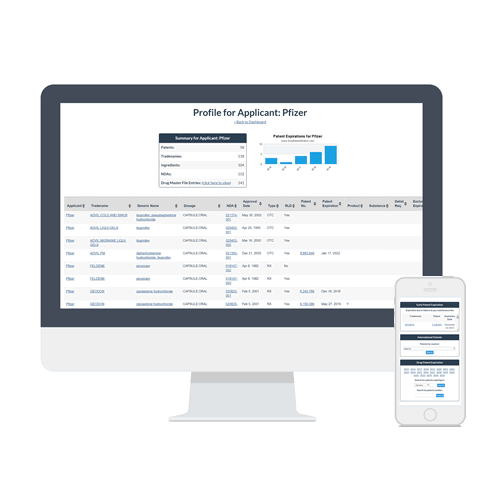
Pharmacokinetics (PK) plays a crucial role in the development and approval of generic drugs. PK studies help ensure that generic drugs are bioequivalent to their brand-name counterparts, meaning they have similar absorption, distribution, metabolism, and excretion (ADME) profiles. This article delves into the importance of pharmacokinetics in generic drugs, addressing key aspects such as bioequivalence, regulatory frameworks, and clinical implications.
Table of Contents
Understanding Pharmacokinetics
Pharmacokinetics is the study of how drugs move through the body and how the body affects the drug. It examines four main parameters: absorption, distribution, metabolism, and excretion (ADME). Understanding these processes is essential for ensuring that drugs are effective and safe.
Bioequivalence: The Core of Generic Drugs
Bioequivalence is a critical concept in the approval of generic drugs. It means that the generic drug must have the same active ingredient, dosage form, strength, route of administration, and labeling as the brand-name drug. The FDA ensures that generic drugs are bioequivalent to their brand-name counterparts through rigorous testing.
Pharmacokinetic Parameters
Several pharmacokinetic parameters are used to determine bioequivalence:
Maximum Concentration (Cmax)
Cmax is the highest concentration of the drug in the bloodstream after administration. It is a measure of the drug’s peak effect.
Area Under the Curve (AUC)
AUC represents the total exposure of the drug in the body over time. It is a measure of the drug’s overall effect.
Time to Maximum Concentration (Tmax)
Tmax is the time it takes for the drug to reach its maximum concentration in the bloodstream.
Half-Life (t1/2)
Half-life is the time it takes for the drug’s concentration to reduce by half. It is a measure of the drug’s duration of action.
Regulatory Frameworks
Regulatory bodies like the FDA have strict guidelines for the approval of generic drugs. These guidelines ensure that generic drugs meet the same standards of safety and efficacy as their brand-name counterparts.
FDA’s Role
The FDA conducts thorough examinations of data submitted by generic drug applicants. They evaluate the drug’s bioequivalence, safety, and quality before approval.
Clinical Implications
While generic drugs are designed to be bioequivalent, there can be variations in how they are absorbed and metabolized by the body. These variations can sometimes lead to clinical discomfort or differences in efficacy.
Within-Subject Variability
Within-subject variability refers to the differences in drug absorption and metabolism within the same individual over time. This variability can affect the drug’s efficacy and safety, regardless of whether the drug is brand-name or generic.
Case Study: Levofloxacin
A study comparing generic and brand-name levofloxacin found that while the drugs were bioequivalent in terms of pharmacokinetic parameters, the brand-name drug showed higher antimicrobial susceptibility and resistance to mutation. This highlights the importance of pharmacodynamic analysis in addition to pharmacokinetic studies.
Challenges and Controversies
Despite the rigorous testing and regulatory frameworks, there are still challenges and controversies surrounding generic drugs.
Quality Concerns
Some generic drugs have been found to have lower quality and clinical efficacy compared to their brand-name counterparts, especially for antimicrobial drugs.
Patient Experience
Patients may experience clinical discomfort or differences in efficacy when switching from a brand-name drug to a generic drug. This discomfort is often attributed to within-subject variability rather than differences in drug quality.
Expert Insights
Industry experts emphasize the importance of pharmacokinetics in ensuring the safety and efficacy of generic drugs.
“Pharmacokinetics is crucial in understanding how drugs move through the body and how the body affects the drug. It helps us ensure that generic drugs are bioequivalent to their brand-name counterparts.”
— Dr. Pieter J. Glerum, Medicines Evaluation Board
Conclusion
Pharmacokinetics plays a pivotal role in the development and approval of generic drugs. By ensuring bioequivalence and understanding the pharmacokinetic parameters, regulatory bodies can provide safe and effective generic drugs. However, within-subject variability and quality concerns remain important considerations in the clinical use of generic drugs.
Frequently Asked Questions (FAQs)
What is pharmacokinetics?
- Pharmacokinetics is the study of how drugs move through the body and how the body affects the drug, focusing on absorption, distribution, metabolism, and excretion (ADME).
Why is bioequivalence important for generic drugs?
- Bioequivalence ensures that generic drugs have the same active ingredient, dosage form, strength, route of administration, and labeling as their brand-name counterparts, making them interchangeable.
What are the key pharmacokinetic parameters?
- The key pharmacokinetic parameters include maximum concentration (Cmax), area under the curve (AUC), time to maximum concentration (Tmax), and half-life (t1/2).
How does the FDA ensure the safety and efficacy of generic drugs?
- The FDA conducts thorough examinations of data submitted by generic drug applicants, evaluates the drug’s bioequivalence, safety, and quality, and monitors side effects and safety issues post-approval.
Why might patients experience clinical discomfort when switching from a brand-name drug to a generic drug?
- Clinical discomfort when switching drugs is often due to within-subject variability in drug absorption and metabolism rather than differences in drug quality.
Sources Cited
- Glerum PJ, et al. Pharmacokinetics and Generic Drug Switching: A Regulator’s View. Medicines Evaluation Board. 2020.
- Bioequivalence of Generic Drugs: A Simple Explanation for a US Psychiatrist. The Journal of Clinical Psychopharmacology. 2015.
- Ma P, et al. Pharmacokinetic/pharmacodynamic comparison between generic and brand-name levofloxacin based on Monte Carlo simulation. ScienceDirect. 2023.
- Pharmacokinetics – StatPearls – NCBI Bookshelf. NCBI. 2024.
- Generic Drugs: Questions & Answers – FDA. FDA. 2021.


